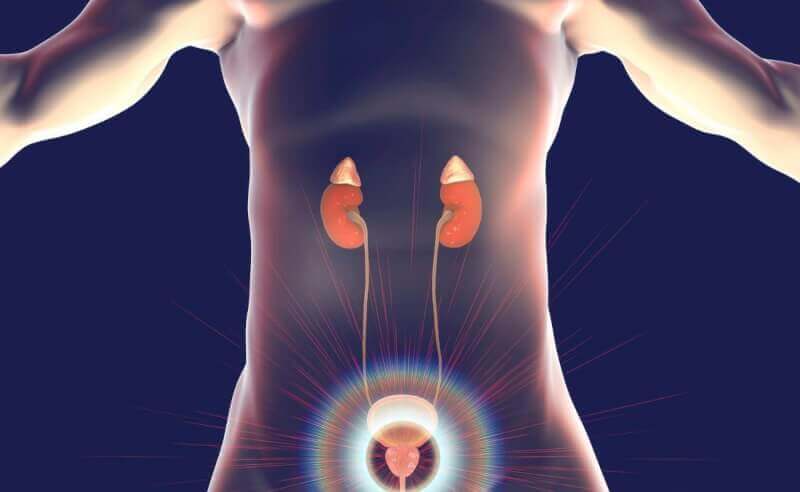30-Second Summary
- The most common symptom is the presence of blood in the urine.
- Diagnosis is made through urine analysis, cystoscopy, and imaging methods.
- Risk factors include age, family history, and smoking.
- Treatment options include surgery, radiotherapy, chemotherapy, and immunotherapy.
What is Bladder Cancer?
The bladder is an organ that stores urine filtered by the kidneys. Later, the urine is expelled from the body through the contraction of the bladder. The inner lining of the bladder is unique to it. Bladder cancers occur in this specific lining. 90% of bladder cancers are confined to the inner surface of the bladder. Cancer cells proliferate uncontrollably in these tissues within the bladder, leading to bladder cancer.
Bladder cancer, which is especially seen in people over the age of 65, is most characteristically marked by painless blood in the urine. Men are four times more likely to develop bladder cancer than women. However, the symptoms in both men and women are similar.
Bladder Cancer Symptoms
Bladder cancer symptoms include:
- Burning and pain during urination,
- Difficulty urinating,
- Intermittent or slow urine flow,
- Frequent urination,
- Decreased urine output,
- Weight loss or weakness,
- Difficulty controlling the bladder or bowels,
- In advanced stages, pain in the hips and back, and stiffness and pain in the thighs.
Symptoms of Bladder Cancer Spreading to Bones
Cancer cells in the bladder can detach over time and enter the circulatory system. These cancer cells can then attach to bones through the circulatory system, resulting in metastasis to the bones. The cancer cells that adhere to bones can remain dormant for a long time. If bladder cancer spreads to the bones, the following symptoms may occur:
- Bone pain is the first sign of bone metastasis. Although bone pain is rare initially, severe pain, especially at night, occurs in later stages.
- Bone fractures are another sign. Cancer weakens the bones, making them prone to easy fractures.
- Numbness,
- Paralysis,
- Difficulty urinating, especially if the cancer is located on the spine, as the cancer begins to put pressure on the spinal nerves.
- Loss of appetite,
- Nausea,
- Excessive thirst,
- Confusion,
- Fatigue, which is caused by high levels of calcium in the blood.
Causes of Bladder Cancer
There are several factors that increase the risk of bladder cancer, with age being the primary one. Bladder cancer is more common in men over the age of 50.
Smoking is another significant risk factor for bladder cancer. Smokers are six times more likely to develop bladder cancer.
Certain occupations also increase the risk of bladder cancer. Exposure to organic or chemical dyes in the workplace contributes to the increased risk.
Chronic bladder inflammation seen in some individuals also ranks among the risk factors for bladder cancer. Bladder inflammation is common, especially in individuals with spinal cord diseases or those who frequently use catheters.
Finally, chemotherapy is also among the risk factors for bladder cancer. Chemotherapy used to treat other types of cancer can cause changes in bladder cells in some patients.
How is Bladder Cancer Diagnosed?
When a patient presents with bladder cancer symptoms, doctors first take the patient's medical history. After that, a physical examination is performed to gather preliminary findings. Advanced tests are required to make a definitive diagnosis.
Cystoscopy
Cystoscopy is an imaging method where a thin, lighted instrument is inserted through the urethra. During this procedure, a biopsy may be performed if necessary.
Imaging Methods
Different imaging tests are used to confirm the diagnosis and determine if the cancer has spread to other organs. These tests examine the abdominal area and also assess the ureters and kidneys.
Stages of Bladder Cancer
As with all types of cancer, bladder cancer also has stages. Identifying the stage of the disease helps in planning the most appropriate treatment. Correctly determining the stage also increases the chances of successful treatment.
Stage 0
One of the key characteristics that distinguishes bladder cancer from other cancers is the presence of a Stage 0. In Stage 0 bladder cancer, the cancer cells have spread to distant lymph nodes or organs. Additionally, there are two subtypes of this stage.
The first subtype is Stage 0a. In this stage, there are a few papillae in the bladder. However, since these papillae are still in the epithelial layer, they have not invaded deeper tissues.
The other subtype of Stage 0 is Stage 0is. In this stage, the papillae grow by spreading rather than growing vertically. This type of cancer seen in patients is also known as carcinoma in situ. Moreover, these types of cancers are highly aggressive.
Stage 1
In this stage, where there has been no metastasis to distant organs or lymph nodes, the cancerous tissues have spread to the layer beneath the epithelial base. In this stage, where there is no invasion into the muscle layer, the cancerous tissues are seen in both the epithelial layer and the subepithelial layer.
Stage 2
In Stage 2 of bladder cancer, although there has been no metastasis to distant organs or lymph nodes, the cancerous tissues have progressed to the muscle layer.
Stage 3
Stage 3 of bladder cancer is divided into two subgroups. The first of these is Stage 3A. In this stage, the cancer has reached the fatty tissue beneath the muscle layer in affected patients. In addition, cancer starts to be observed in surrounding organs. Specifically, cancer begins to appear in the prostate and vagina. Furthermore, at least one regional lymph node shows metastasis, but there is no metastasis to distant organs or lymph nodes.
In Stage 3B, metastasis occurs in the upper pelvic and pelvic lymph nodes, but metastasis has not yet occurred in distant organs.
Stage 4
Stage 4 of bladder cancer is also divided into two subgroups. In Stage 4A, cancerous tissues have metastasized to distant lymph nodes, but there is no metastasis in distant organs. In this stage, metastasis may also be seen in the iliac vessels.
The other subgroup of Stage 4 is Stage 4B. In this stage, cancer has spread to organs such as the bones, liver, and lungs.
Bladder Cancer Treatment Methods
There are various treatment methods for bladder cancer, which is one of the most common types of cancer. The treatment to be applied should be decided jointly by urologists and patients based on the characteristics of the cancer and the patients.
Transurethral Resection (TUR)
Bladder cancer surgeries, where the bladder is removed, are among the most well-known treatment methods for bladder cancer. This surgery is performed using two different methods, one of which is TUR.
This method, which is especially preferred for early-stage bladder cancer, is performed using a medical device with a camera and a scraping blade. With this medical device, the cancerous area is completely removed. This method is also frequently preferred for bladder cancer that has progressed to the muscle tissues.
Cystectomy
Another surgical method used in the treatment of bladder cancer is radical cystectomy surgery. This method is preferred if the cancerous tissue can be removed without damaging the bladder tissues.
In male patients who undergo cystectomy, the removal of the seminal vesicles and prostate may also be necessary. As a result, erectile dysfunction may occur in male patients. However, doctors can separate the nerves necessary for erection, preventing erectile dysfunction in the future.
In women who undergo cystectomy, it may be necessary to remove the ovaries, uterus, and part of the vagina. Removing the ovaries in women can lead to early menopause and infertility.
In addition, cystectomy surgeries carry the risks of bleeding and infection. If these surgeries are performed using the da Vinci robotic surgical system, the operation is called robotic radical cystectomy surgery.
Radiotherapy and Chemotherapy
If surgery is not an option for bladder cancer patients, radiotherapy is applied.
Another method used in the treatment of bladder cancer is chemotherapy, which is applied using two different methods. The first method is known as intravesical chemotherapy, where the chemotherapy is applied directly to the bladder. This targeted treatment is particularly used for aggressive cancers with a high risk of progression.
The other type of chemotherapy is systemic chemotherapy, which is applied to the entire body.
Immunotherapy
In immunotherapy used for bladder cancer, the patients' immune systems play a crucial role in the treatment. The drugs used activate the immune system, enabling it to fight the cancer.














